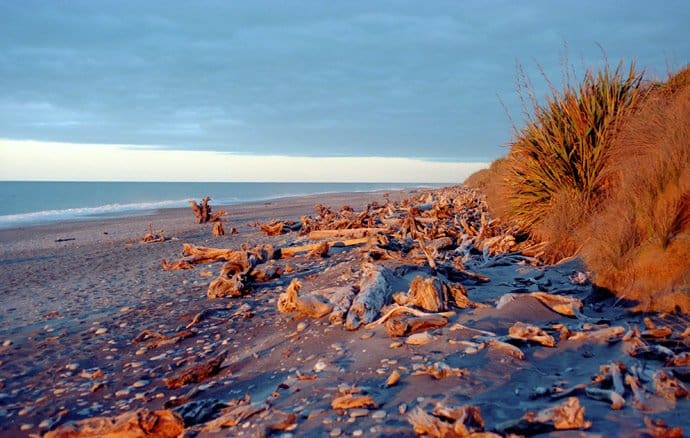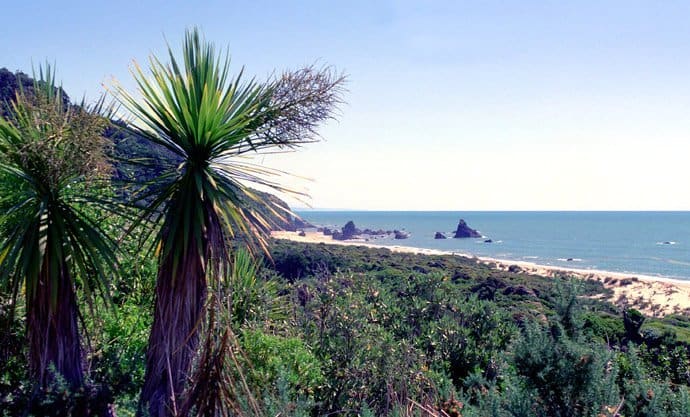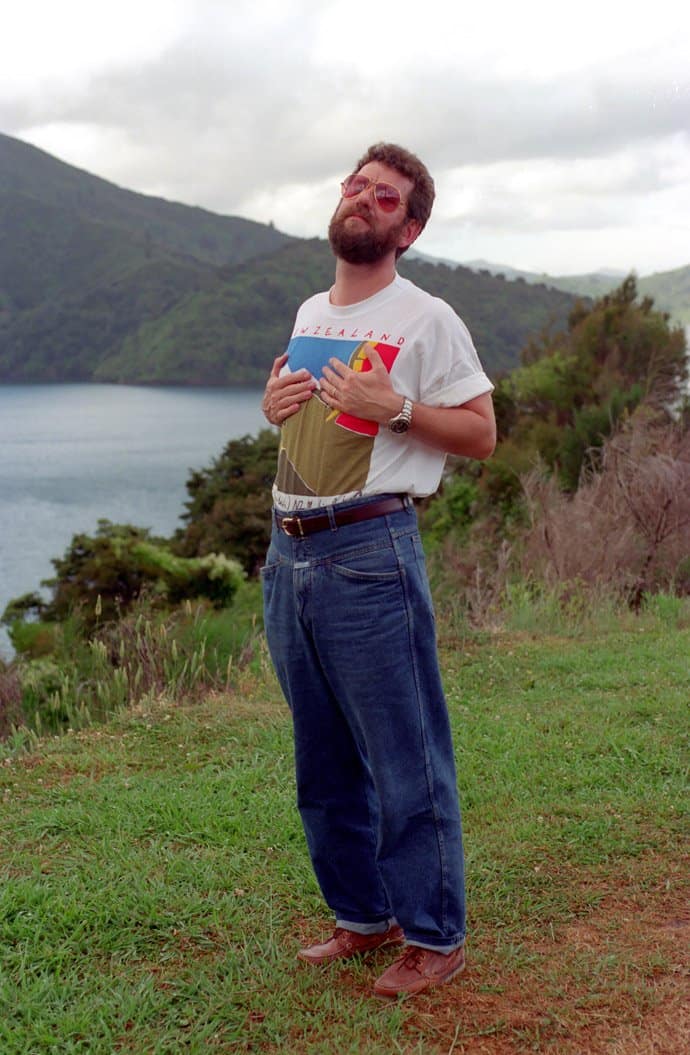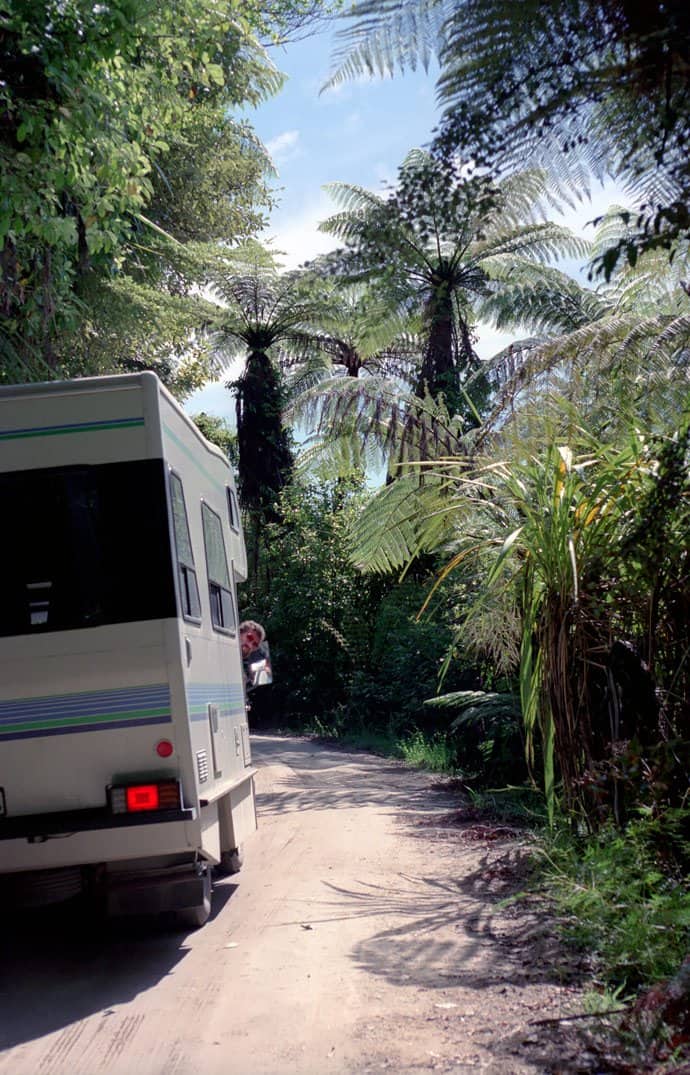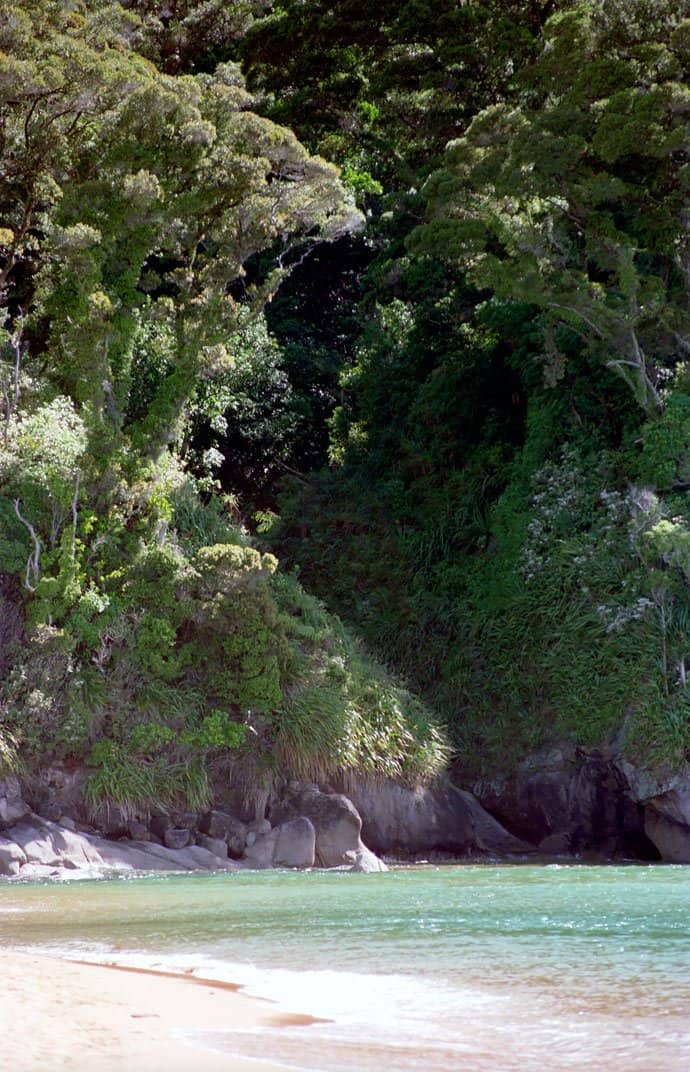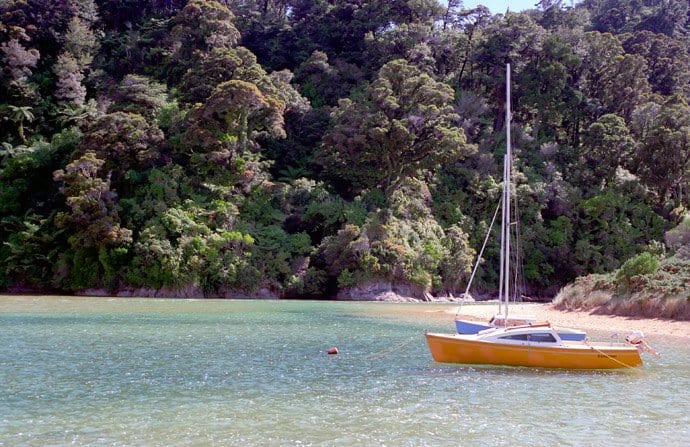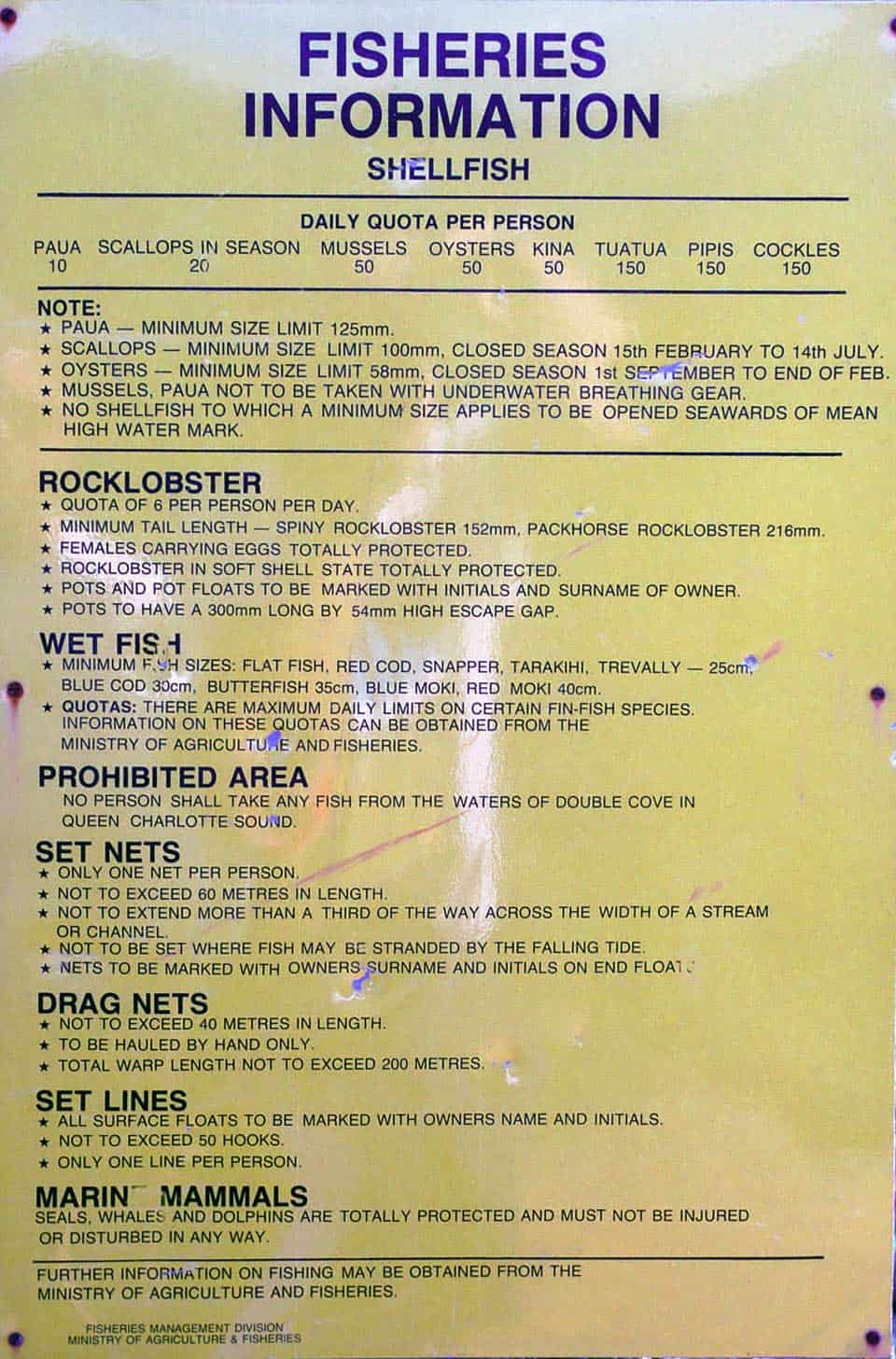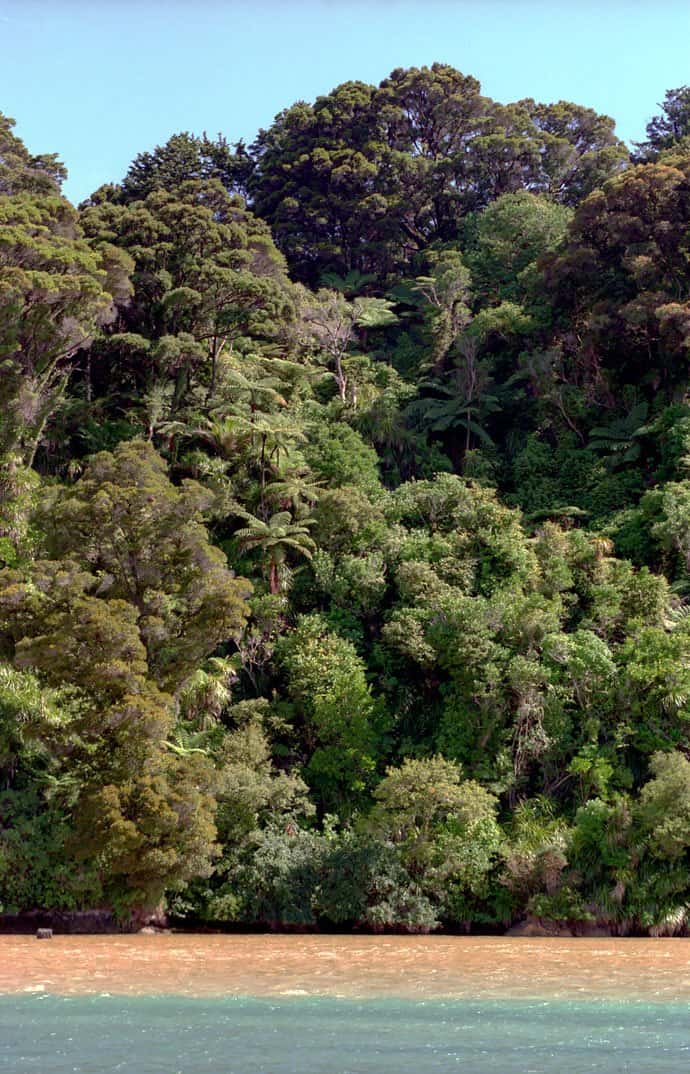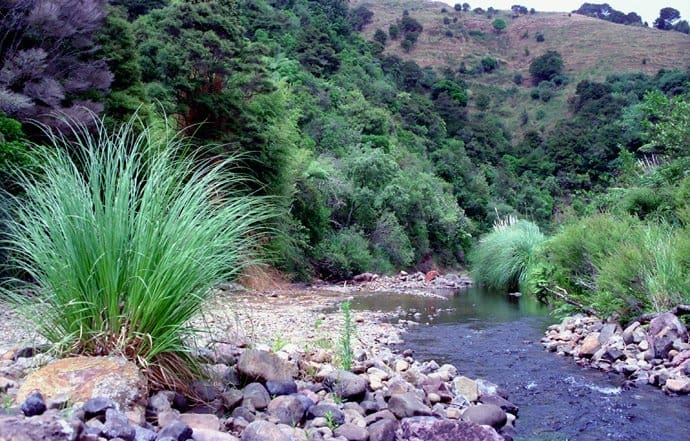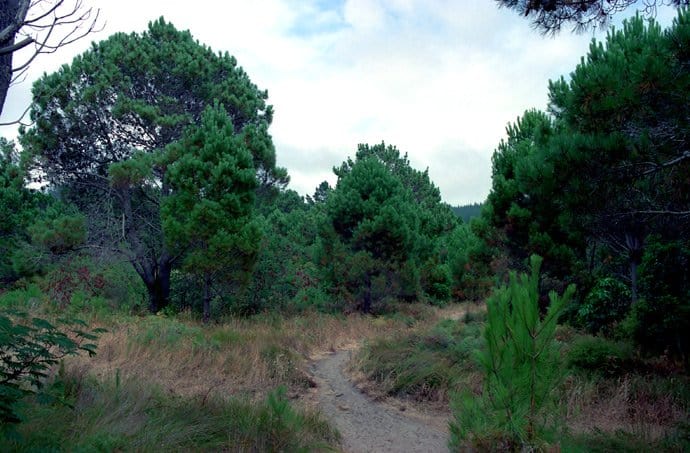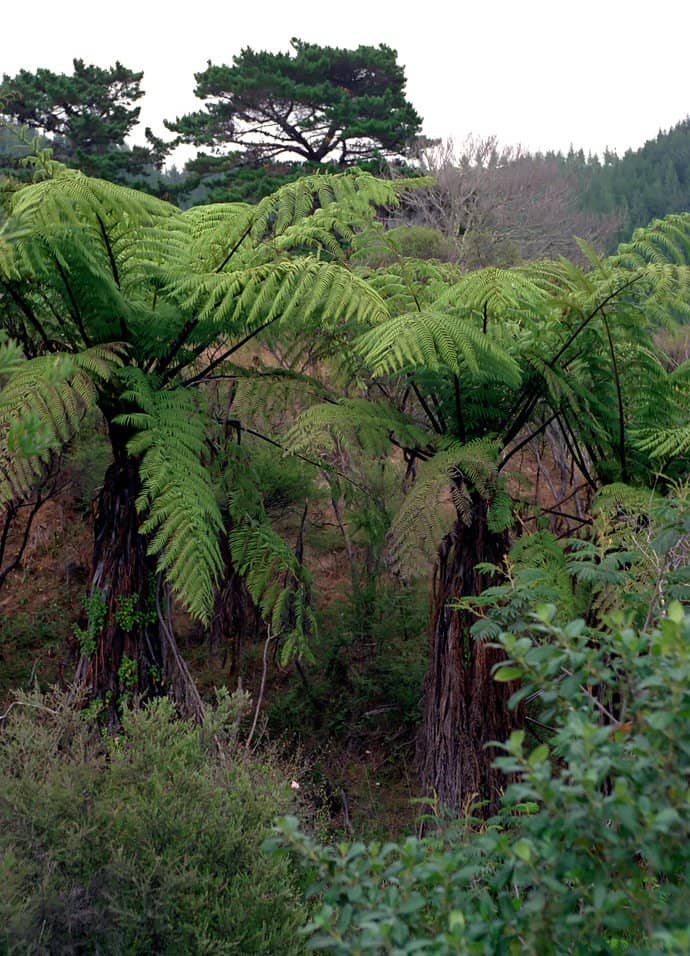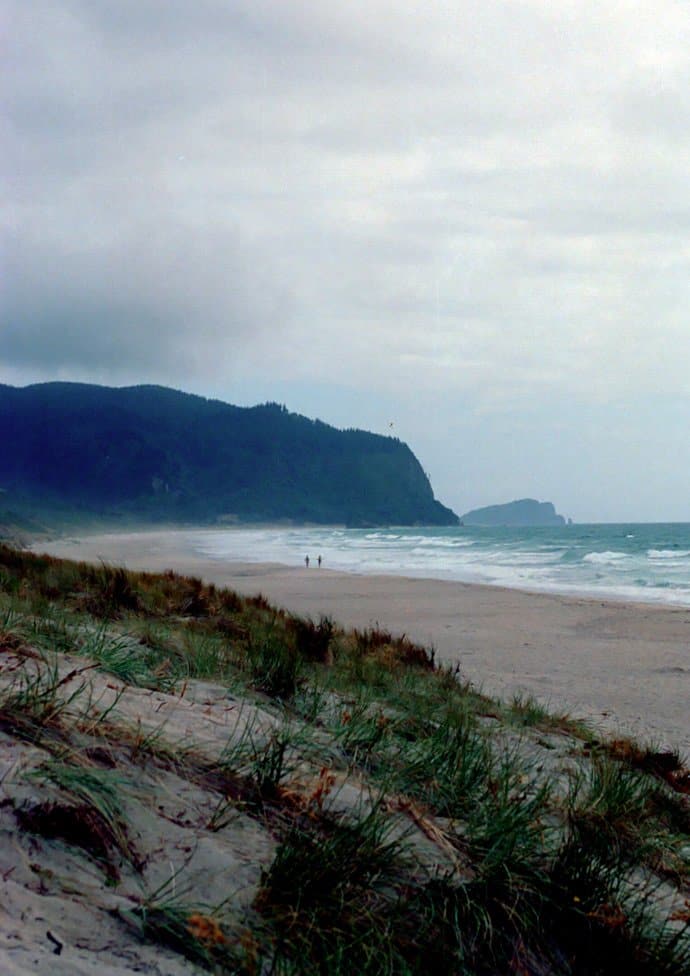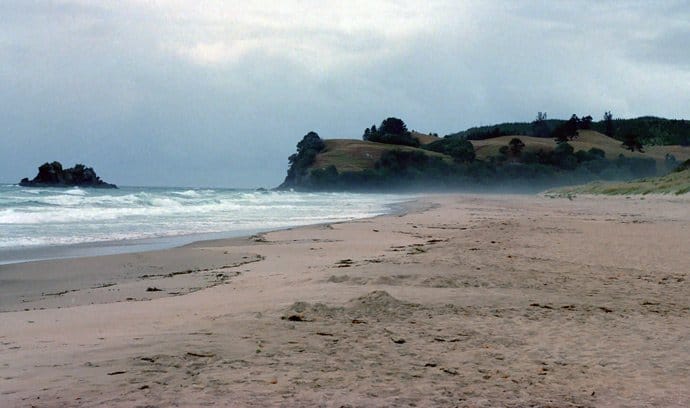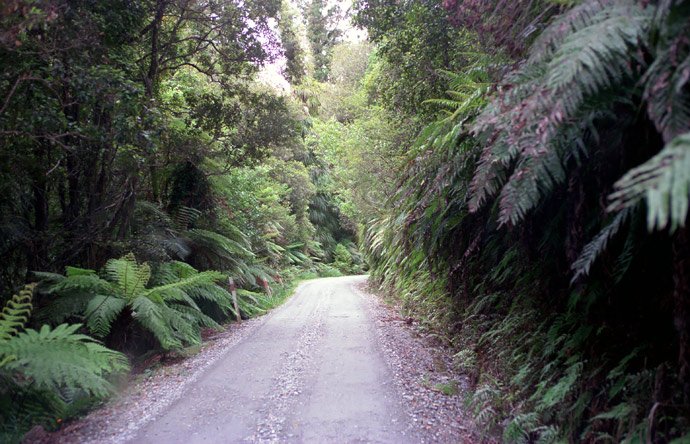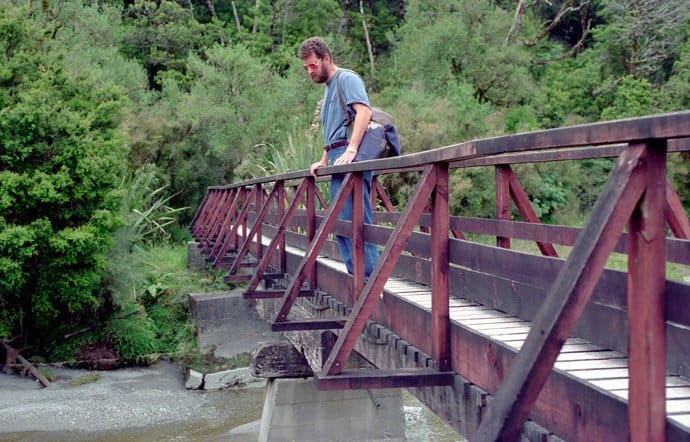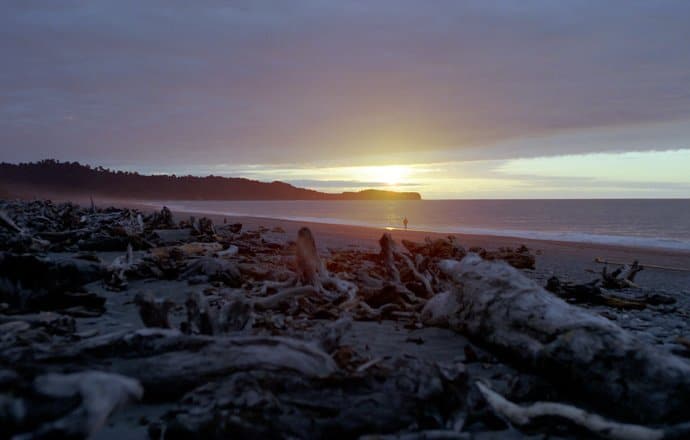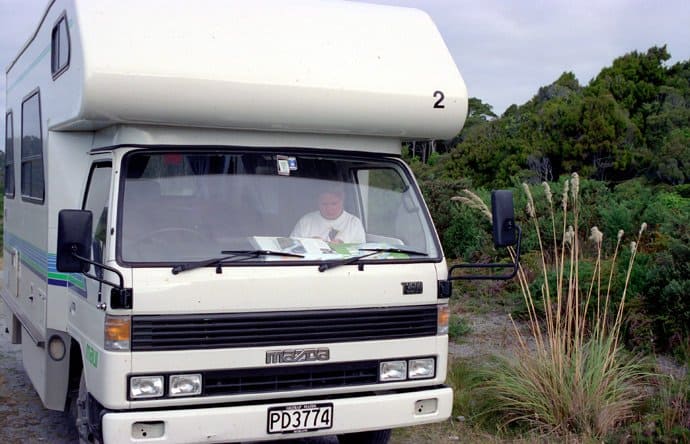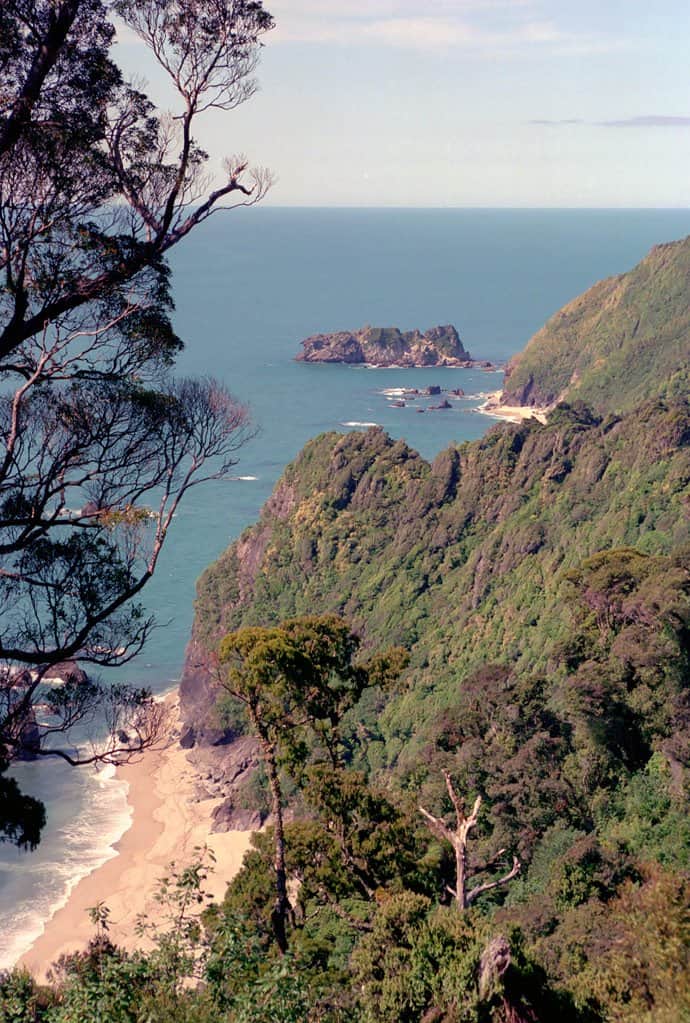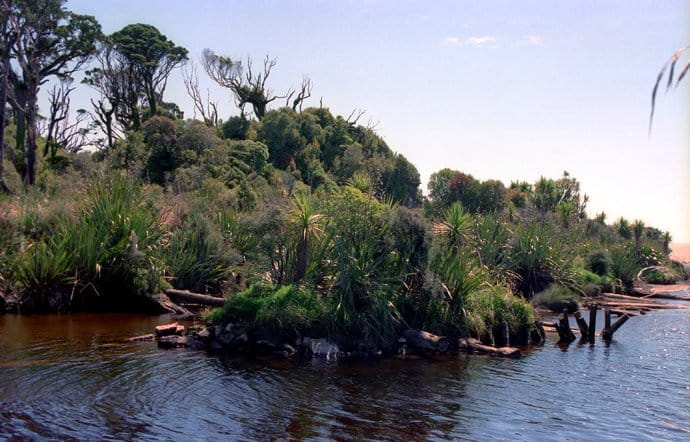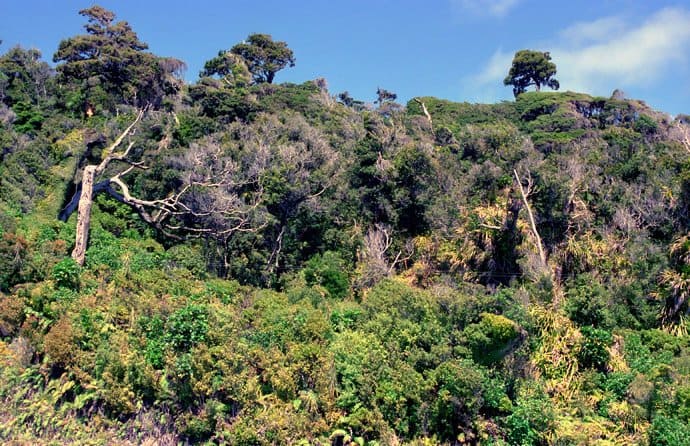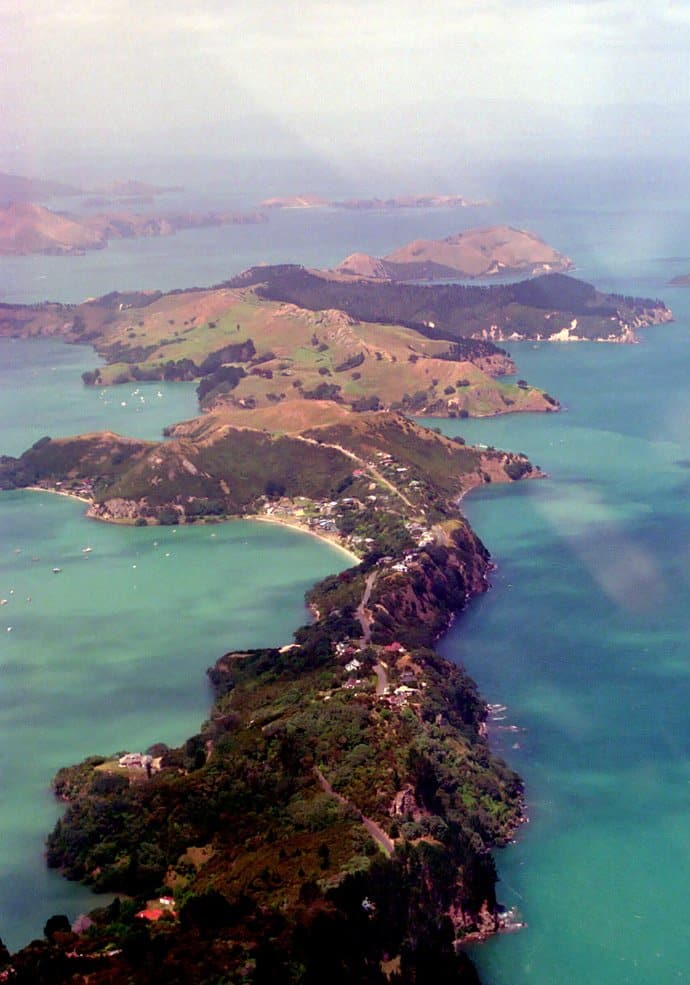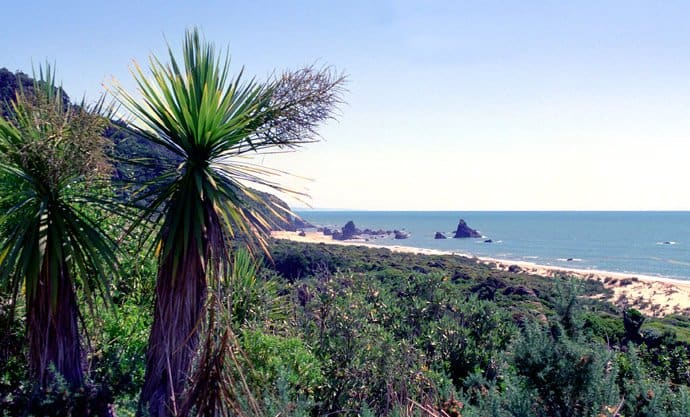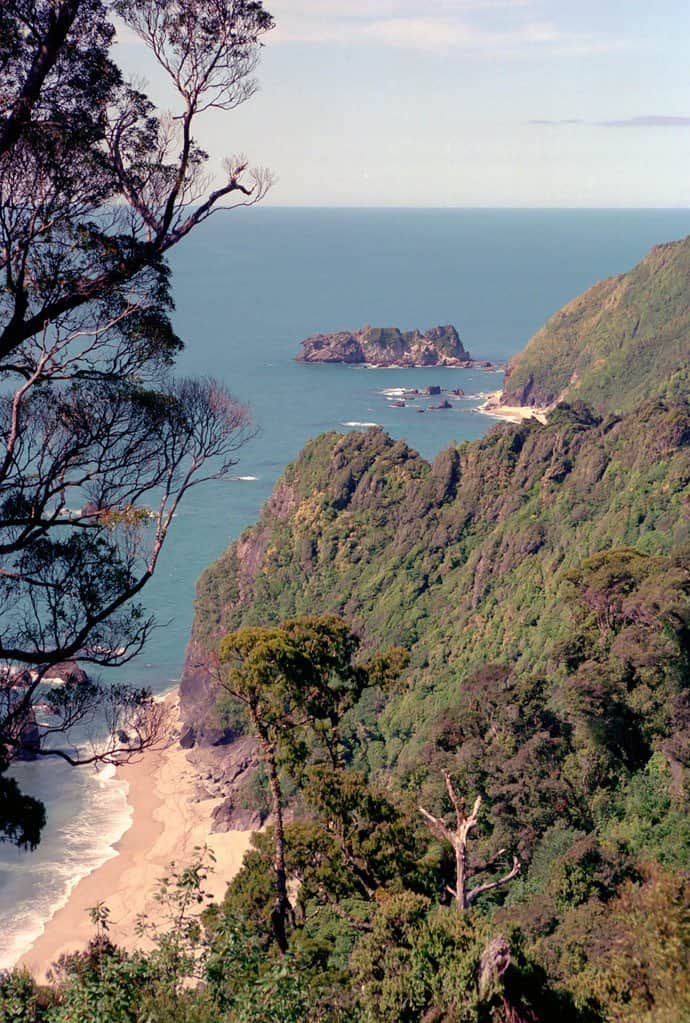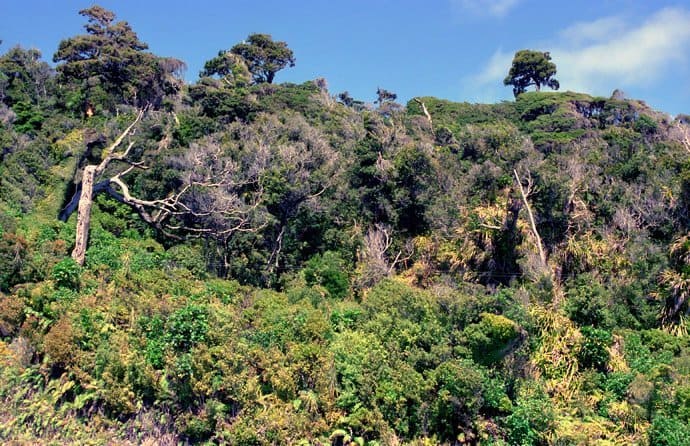New Zealand – Coromandel
The Coromandel Peninsula is east of Auckland, on the other side of the Hauraki Gulf. Coromandel’s fascinating history can be seen in the relics of the gold rush era, the logging dams and the ancient pas (fortified villages) of the Maori. The past can also be found in the charming colonial architecture and historic buildings that are still preserved in various cities in the region.
An impressive, heavily wooded mountain range rises right in the middle of the Coromandel Peninsula – it is bounded on all sides by a kilometer-long spectacular coastline. On the west coast, there is a never-ending string of beaches, coves and harbors lined with pohutukawa trees (a native of New Zealand tree with red flowers).
On the eastern side of Coromandel we find an amazing collection of white sand and surf beaches. We drive up the coastal road to the Square Kauri Tree, one of the largest and oldest trees in the Coromandel Peninsula. It is located on the road between Tapu and Coroglen, about an hour’s drive from Thames. The subtropical vegetation is simply impressive. Again and again, from elevated locations offer fantastic views of the beaches below.
New Zealand vegetation on the Coromandel Peninsula
From Cape Reinga to Auckland and on the Coromandel Peninsula, we find vast mangrove forests that cover entire coastlines. Thousands of trachea protrude from the mud to oxygenate the plants, which can reach 5 meters in height. From Whitianga Wharf you can take the ferry to Stone Steps Wharf, the starting point of Cook’s Coast. Front Beach, Flaxmill Bay, Shakespeare’s Cliff, Lonely Bay and Cook’s Beach are all within walking distance.
At the foot of the Shakespeare Cliff lies the Flaxmill or Homestead Bay in a southerly direction. It offers a sheltered anchorage for small boats. It is said that Captain Cook landed here with the Endeavor. On the south side of the cliff are the Lonely Bay and Cooks Beach.
Lonely Bay is a narrow bay, clipped and untouched – accessible only from the Cook Memorial via a short steep footpath. We find after a long search a narrow dirt road, which is only suitable for a SUV. Big nagging at Brigitte.
I decide to go down anyway. In tight turns, it goes down the mountain. There is no way back. We drive at walking pace. In some places, the branches must first be knocked aside. We need about 60 minutes for about 3 km. On foot we would have been faster.
At the bottom, a 5 km long bay awaits us, which looks like another star in the evening sun. We are looking for a place right on the beach for the night. There is no soul to be seen far and wide. No footprints in the sand, no sound, nothing! Only the effects of a hurricane that has been swept through here not so long ago can be seen. Everywhere are tree trunks and flotsam on the beach. A scenery, as after a tsunami …..
……. the silence and loneliness (except for the steady sound of the sea) is soothing and exciting at the same time. We walk a bit along the beach to enjoy the setting sun. Huge uprooted tree trunks over the beach. Whole palms have been torn out and stand loosely in the ground like a giant hand. We have a restless night, the renewed storm tugging at our little camper. But we have to endure …………. the slope to go back in the dark is almost impossible ….
The inspiring natural beauty of Coromandel has made the area a paradise for artists and artisans in recent years. The painter Hundertwasser also had his house and his sailing yacht here.
The cities of Thames and Coromandel were once the scene of the gold rush. Today it is idyllic and interesting places. To admire the birdlife of Coromandel, it is best to go on the wooden bridge through the mangroves to Hide.
We survived yesterday’s night at Lonley Beach more or less well. After a few kilometers drive we find an equally beautiful but tidier bay. We set up our mobile home a few meters away from the beach. The bay is about 6 kilometers long and is separated from the hinterland by a sand dune.
In the huge bay two people can be seen far away from us, walking along the beach. That’s reassuring for Brigitte. So we are not “completely” alone.
New Zealand Peninsula – Miles lonely beach on the Coromandel Peninsula
We spend the rest of the day here and stay overnight at this place. From Thames you can do the Rocky’s Goldmine Trail – one three-hour walk through the bush. He starts at Dickson Holiday Park. On the trail you have wonderful views of the Firth of Thames and the regrowing native rain forest. We are surrounded by giant ferns, man-sized grasses and small crystal-clear streams. A landscape that animates to dream and linger, far away from any mass tourism. Coromandel is a favorite holiday destination for the New Zealanders themselves. Their beachfront private cottages, called “creeks”, can be rented, and there are over 200 places to stay: luxurious weekend cottages, motels, bed & breakfast and campgrounds, yet the atmosphere is serene, green and secluded About half of the Coromandel Peninsula is under the protection of the Department of Conservation, which includes the Hahei Marine Reserve, with its impressive limestone coastline, as well as the rainforests of the volcanic mountainous country, where ancient huge Kauri trees have survived the logging season, and the road winds north along the Pohutukawa-covered west coast of the peninsula to the small villages of Coromandel and Colville.The Pohutukawa is a spectacular native tree whose red flowers bloom around Christmas. The drive to the East Coast leads to the breathtaking Mercury Bay. Here are two famous beaches – the beautiful Cathedral Cove and the unique Hot Water Beach. The Hot Water Beach lives up to its name. At low tide you can dig hot pools near the rocks with some diligence. Volcanic activity is rare on the Coromandel Peninsula. Hot Water Beach is also a good surfing spot. The Coromandel Peninsula is a paradise for anglers. At the most desirable places the rules for anglers are set. Fishing is only allowed for your own consumption. Fishing with nets is prohibited. We try to secure our dinner with a homemade fishing line. After a few minutes, we succeed. A handsome snapper wriggles on the hook. Scaled, ausgenomen and grilled on the open fire, he tastes us better than any fish restaurant. The subtropical rainforest grows up to the riparian zones. The trees are overgrown with moss and creepers. In the small bays, which are often only accessible from the sea, we find real water caves. Going into these bays by boat, snorkeling a bit, catching fresh fish and then dozing in the sand after eating is not just a dream but a lived reality. An everyday experience for many of the New Zealanders living here, an unforgettable adventure for most “travelers”. We will stay here for a few more days before we say goodbye to the Coromandel Peninsula. One last time we enjoy the ride through the incomparable vegetation and look forward to new more interesting impressions on our journey. Another nice way to “experience” the Coromandel Peninsula is by mountain bike through previously planned sections. This is especially the Kauaeranga Valley. The road follows the Kauaeranga River and you can swim in some places. You can also take the coastal road up to the Square Kauri Tree, one of the largest and oldest trees in the Coromandel Peninsula.

